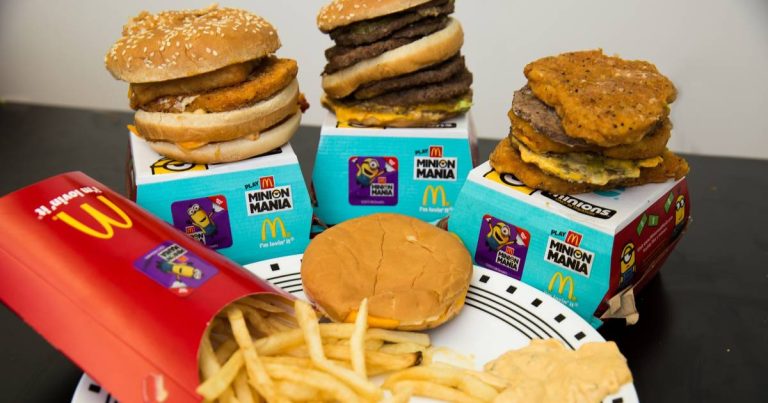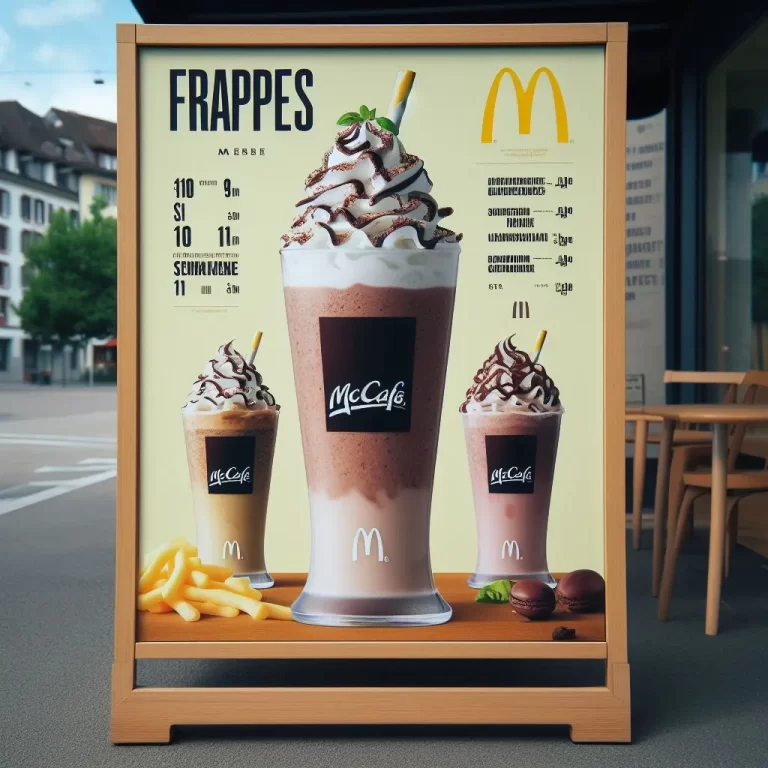How Old Is McDonalds? History of an American Icon!
How old is McDonalds? As of 2024, this iconic fast-food chain is celebrating 84 years since its humble beginnings in 1940. Founded by brothers Richard and Maurice McDonald in San Bernardino, California, McDonald’s has transformed from a small hamburger stand into the world’s largest fast-food restaurant chain. With a recognizable Golden Arches logo and a menu that has evolved to cater to diverse tastes, McDonald’s has become synonymous with American culture and globalization.
From the introduction of the “Speedee Service System” to the playful character of Ronald McDonald, the brand has continually adapted while maintaining its core identity. As we delve into the history of this beloved institution, we will explore the milestones that have shaped McDonald’s into the global giant it is today, marking its significant impact on food culture, business practices, and consumer habits.
Table of Contents
Key Details:
| Attribute | Details |
| Founded | May 15, 1940 |
| Founders | Richard and Maurice McDonald |
| First Restaurant Location | San Bernardino, California |
| Initial Concept | A drive-in restaurant focused on barbecue items |
| Innovative System | Introduced the “Speedee Service System” for fast food service |
| Family Background | McDonald brothers moved from Manchester, New Hampshire to Hollywood in the late 1930s |
| Father’s Food Stand | Patrick McDonald opened The Airdrome food stand in Monrovia, California in 1937 |
| Menu Shift | In 1948, focused on hamburgers, dropping barbecue items |
| Architectural Innovation | New restaurant design by Stanley Clark Meston featuring the iconic “Golden Arches” |
| First Franchisee | Neil Fox opened the first franchise in Phoenix, Arizona in 1953 |
| Ray Kroc’s Involvement | Kroc visited the McDonald brothers in 1954 and proposed national franchising |
| Real Estate Model | Implemented by Harry J. Sonneborn to own land for franchises, crucial for financial growth |
| Major Expansion | By 1960, gross revenue reached $56 million annually |
| First International Locations | San José, Costa Rica in 1970; first European restaurant in Zaandam, Netherlands in 1971 |
| Notable Menu Items | Introduction of the Filet-O-Fish in 1962 and Big Mac in 1967 |
| Crisis Management | Responded to public relations crises in the early 1990s, including bombings and murders related to McDonald’s restaurants |
| Current Operations | Over 38,000 locations globally, with a shift to all-day breakfast introduced in 2015 |
| Recent Developments | Suspended operations in Russia in March 2022 in response to geopolitical issues |
The Founding of McDonald’s in 1940
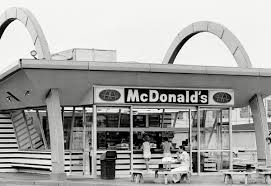
Siblings Richard and Maurice McDonald opened their first McDonald’s at 1398 North E Street in San Bernardino, California, on May 15, 1940. Initially a traditional drive-in, they soon revolutionized the fast food industry. In 1948, they introduced the “Speedee Service System,” inspired by principles from White Castle. This innovation streamlined operations and focused on efficiency.
The original mascot, a hamburger-headed chef named “Speedee,” symbolized this speedy service. The system’s success laid the foundation for the brand’s growth. With a simple menu of burgers, fries, and beverages, the brothers set the stage for a fast-food empire. Their vision and efficiency transformed McDonald’s from a single location into a pioneering business model in the fast food industry.
The Birth of the Golden Arches in 1953
In 1953, McDonald’s introduced its now-iconic Golden Arches logo. This decision marked a significant branding shift. The first Golden Arches appeared in a Phoenix, Arizona location. They represented more than just a logo; they symbolized a new era of fast food. The distinctive arches quickly became a recognizable global icon.
Richard and Maurice McDonald’s innovative design set them apart. Ray Kroc later capitalized on this branding success. The logo evolved from a single arch to double arches. The new design emphasized uniformity and brand identity. It became synonymous with speed and quality. As McDonald’s expanded, the Golden Arches unified its global presence. By the 1960s, the logo was firmly established. It played a crucial role in McDonald’s rapid growth and widespread recognition.
Ray Kroc and the Expansion Era
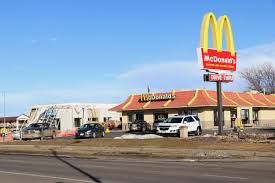
Ray Kroc joined McDonald’s in 1955, bringing an ambitious vision. As a franchise agent, he saw the potential for massive growth. He purchased the company from the McDonald brothers in 1961 for $2.7 million. Kroc’s aggressive business strategies pushed expansion worldwide. He focused on consistency and quality across all locations.
Under his leadership, McDonald’s increased, opening new outlets globally. Kroc emphasized uniformity, ensuring every restaurant delivered the same experience. He pioneered real estate ownership, leasing properties to franchisees. This innovative model fueled McDonald’s growth and profitability. Ray Kroc’s relentless drive transformed McDonald’s into a global fast-food empire. His impact is still evident today, shaping the brand’s enduring success and reach.
From Oak Brook to Chicago – A Headquarters Shift
In June 2018, McDonald’s made a significant move, relocating its global headquarters from its longtime base in Oak Brook, Illinois, to downtown Chicago. This change marked a new chapter, blending tradition with modernity. The new headquarters is situated in the vibrant West Loop, reflecting McDonald’s commitment to innovation. The sleek, contemporary building features open workspaces, encouraging collaboration.
This relocation aimed to attract top talent and foster a dynamic corporate culture. Employees now enjoy easy access to Chicago’s amenities, enhancing their work-life balance. The move symbolizes McDonald’s desire to stay relevant in a rapidly changing industry. By immersing itself in a bustling urban environment, McDonald’s continues to evolve, remaining a prominent player in the global market.
McDonald’s as a Real Estate Giant
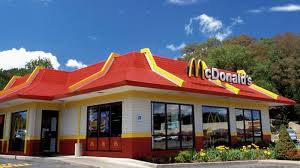
McDonald’s is not just a fast food chain; it’s a real estate powerhouse. The company owns around 70% of its restaurant buildings and 45% of the land they sit on, a strategy that has proven highly profitable—McDonald’s leases these properties to franchisees, ensuring a steady revenue stream. By controlling prime real estate locations, McDonald’s maximizes its market presence. This unique model offers financial stability and growth opportunities.
Franchisees benefit from established, high-traffic areas, boosting sales. Meanwhile, McDonald’s retains significant control over its brand and operations. This real estate approach differentiates McDonald’s from other fast-food chains and underscores the company’s innovative business strategies. By leveraging property ownership, McDonald’s secures its long-term profitability and expansion potential.
Global Reach and Customer Base
McDonald’s is the world’s largest fast-food chain, serving over 69 million customers daily. Its global reach is unparalleled, Operating in over 100 countries with over 40,000 outlets. From bustling urban centres to remote rural areas, McDonald’s adapts its menu to local tastes. For example, in India, the chain offers the McAloo Tikki burger, catering to local vegetarian preferences.
In Japan, customers enjoy the Ebi Filet-O, a shrimp burger unique to the region. McDonald’s ability to customize menus while maintaining core offerings like the Big Mac and French fries helps it appeal to a diverse customer base. The brand’s global presence makes it a symbol of globalization, spreading American culture worldwide. McDonald’s remains a favourite among millions with consistent quality and localised offerings.
Menu Evolution and Popular Items
| Menu Development | Description |
| Early Menu Staples | McDonald’s early menu focused on hamburgers, cheeseburgers, fries, and beverages, laying the foundation for its initial success. |
| Introduction of Breakfast Items | In 1972, McDonald’s introduced breakfast items with the Egg McMuffin, expanding its customer base to include morning diners. |
| Chicken McNuggets and Beyond | Debuting in 1983, Chicken McNuggets became an instant hit, marking the beginning of McDonald’s diverse poultry offerings. |
| Seasonal Favorites | The McRib sandwich, first introduced in 1981, is offered seasonally, creating excitement and demand among customers. |
| Health-Conscious Choices | McDonald’s has added salads, fruit, and wraps to cater to health-conscious customers, providing lighter and nutritious alternatives. |
| Global Menu Variations | McDonald’s adapts its menu to local tastes with items like the McAloo Tikki in India and the Ebi Filet-O in Japan, appealing to diverse cultures through localization. |
Iconic Mascots and Marketing Strategies
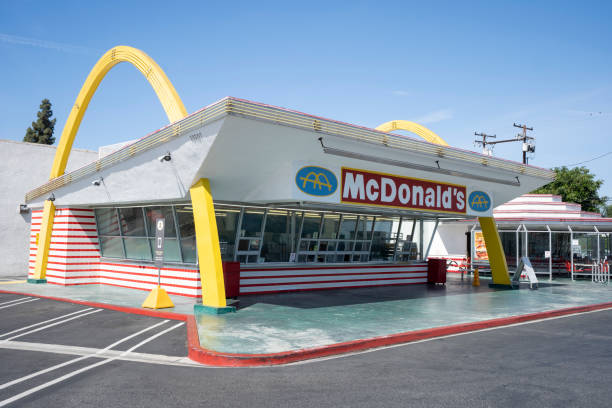
| Milestone | Description |
| Speedee the Hamburger Chef | Introduced in 1948, Speedee was McDonald’s original mascot, symbolizing the brand’s commitment to quick service. |
| Ronald McDonald Debut | Ronald McDonald, the face of the brand, debuted in 1963, appealing primarily to children and establishing a joyful image for the fast-food chain. |
| Happy Meal Introduction | Launched in 1979, the Happy Meal included toys, becoming a hit among kids and enhancing McDonald’s family-friendly image. |
| Golden Arches Marketing | The iconic Golden Arches, introduced in 1953, were leveraged in advertising, creating a universally recognizable brand symbol that remains integral to McDonald’s identity. |
| Catchy Jingles | Memorable jingles like “I’m Lovin’ It,” launched in 2003, have played a significant role in McDonald’s marketing success, creating brand recall and engagement. |
| Celebrity Endorsements | McDonald’s has utilized endorsements from celebrities, such as Michael Jordan, and partnerships with brands like Disney to widen its appeal across various demographics. |
Corporate Initiatives for Healthier Options
| Initiative | Description |
| Reducing Artificial Ingredients | McDonald’s has removed artificial preservatives, flavors, and colors from various menu items, including classic burgers in the U.S. |
| Nutritional Transparency | The company provides comprehensive nutritional information for all products, empowering customers to make informed dietary choices. |
| Healthier Buns | Since 2015, McDonald’s has replaced high-fructose corn syrup in its hamburger buns with healthier alternatives. |
| Cleaner Chicken Nuggets | Chicken McNuggets now contain no artificial preservatives and are made with natural ingredients like pea starch and powdered lemon juice. |
| Plant-Based Options | The introduction of the McPlant burger and other meat alternatives caters to the growing demand for vegetarian and vegan choices. |
| Sourcing and Sustainability | McDonald’s is committed to sourcing sustainable ingredients, including cage-free eggs and responsibly sourced coffee, thereby enhancing health and environmental standards. |
Innovations and the Future of Fast Food
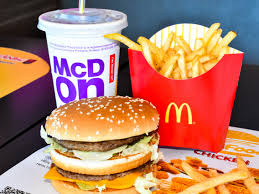
McDonald’s continues to lead in fast food innovation. The introduction of the McPlant burger marks a significant step toward plant-based menu options following successful tests of Beyond Meat products. Digital advancements, like self-order kiosks and mobile app ordering, streamline the customer experience. McDonald’s also focuses on sustainability by eliminating artificial preservatives and reducing packaging waste.
The company invests in renewable energy to power its restaurants. Looking ahead, McDonald’s plans to expand its meat alternative offerings. They are testing new vegan products like Choco Scoop and Strawberry Scoop ice cream in the UK. Additionally, McDonald’s is exploring AI technology to enhance drive-thru efficiency. These innovations keep McDonald’s at the forefront of fast food evolution, meeting modern demands and setting industry standards.
McDonald’s and Cultural Impact
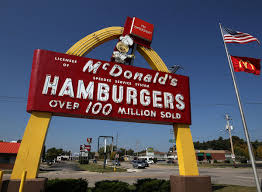
McDonald’s has significantly influenced global culture, shaping eating habits and lifestyles. The brand’s advertising campaigns are iconic, featuring memorable slogans and jingles. Introduced in 1963, Ronald McDonald became a beloved figure, engaging children worldwide. Moreover, McDonald’s restaurants often become social hubs, reflecting local culture.
The “Golden Arches” are recognized symbols of American fast food culture, even in remote regions. Movies and TV shows frequently reference McDonald’s, showcasing its ubiquity. McDonald’s sponsorships of significant events, like the Olympics, further cement its cultural presence. Their Happy Meals, with collectable toys, create childhood memories.
Notably, McDonald’s adapts to local customs, offering region-specific menu items. This balance of global consistency and local adaptation strengthens its cultural impact. As globalization continues, McDonald’s remains a potent artistic force.
Frequently Asked Questions
How old is McDonald’s?
McDonald’s was founded on May 15, 1940, making it 84 years old as of 2024. The brand has grown from a single hamburger stand to the world’s largest fast-food chain.
Who started McDonald’s?
McDonald’s was founded by brothers Richard and Maurice McDonald in San Bernardino, California. Ray Kroc later purchased the company and expanded it globally.
What is the “Speedee Service System”?
The McDonald brothers introduced the “Speedee Service System” in 1948. It streamlined restaurant operations and focused on quick service, setting the foundation for modern fast food.
What is the significance of the Golden Arches?
The Golden Arches were introduced in 1953 and became McDonald’s iconic logo. They symbolize the brand’s identity and are recognized worldwide as a symbol of fast food and American culture.
Conclusion
McDonald’s, an iconic fast food chain, has an enduring legacy. From its modest start in 1940, it revolutionized dining with the “Speedee Service System.” Over the decades, the Golden Arches have become a global symbol. Ray Kroc’s ambitious vision expanded McDonald’s reach worldwide. Today, it serves millions daily across diverse markets.
The brand continues to innovate, introducing healthier and plant-based options. McDonald’s influence extends beyond food, shaping cultural norms and business models. Its ability to adapt while maintaining core values is remarkable. The journey from a single stand to a global powerhouse reflects resilience and vision. As McDonald’s celebrates 84 years, it is a testament to continuous growth and adaptation in an ever-changing world.
